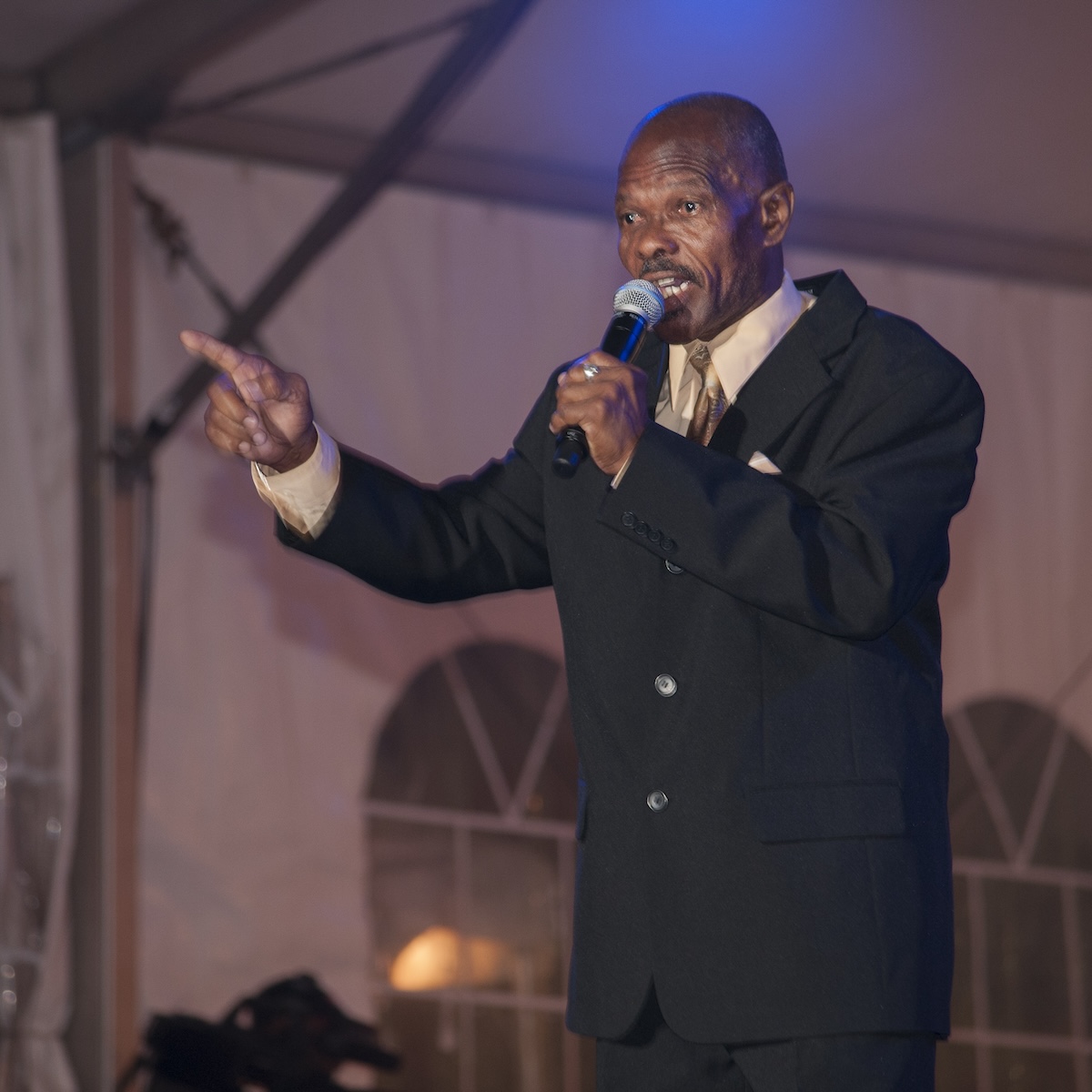Barbados' Pic-O-De-Crop Final to Showcase Historic Gathering of Former Monarchs for Crop Over's 50th Anniversary

August 1, 2024
The Courtesy Garage Pic-O-De-Crop Final will feature four former monarchs celebrating Crop Over's 50th anniversary, taking the audience on a musical journey through their storied history in the competition.
When the 18 finalists of the Courtesy Garage Pic-O-De-Crop Final gather to do battle on Friday night, it will be an historic occasion for more reasons than one.
For the first time, four former monarchs — each of whom at pivotal times left a lasting mark on the island’s premier calypso competition — will take the stage to celebrate Crop Over’s 50th anniversary.
A wave of nostalgia is anticipated to sweep over the National Botanical Gardens as the festival’s first king Keithroy Destroyer Christian, calypso’s maestro Most Honourable Anthony Gabby Carter, the most decorated Pic-O-De-Crop monarch Most Honourable Stedson Red Plastic Bag Wiltshire and the celebrated General Edwin Yearwood take the audience on a musical journey through their storied history in the competition.
Destroyer will kick off the show, a role he is quite familiar with, having claimed the crown back in 1975 during the inaugural Crop Over Calypso competition.
Before the National Cultural Foundation (NCF) was established in 1983 to organise Crop Over, in 1974 the Barbados Board of Tourism (BBT), led by Julian Marryshaw, set up a Crop Over Committee to revive the festival to attract more tourists. However, as Destroyer recalled, calypso competitions were initially not viewed as a driving force of the festival. Hence none were introduced at the state level.
That was until 1975, when he and fellow calypsonian Edrick Mighty Dragon Jordan approached Marryshaw with the idea of a state-run calypso competition. An idea which was met with support. That year, competing before a modest crowd of about 40 at Marine House in Hastings, Christ Church, Destroyer walked away with a challenge trophy for the self-penned Crop Over Bacchanal/Crop Done) and Come Together.
The following year, having not received his promised winnings of $300 and a trip to Trinidad to perform in a tent for payment, he refused to defend his crown and Grynner won the show.
There was no competition in 1977 but in 1978 it returned when the Ministry of Education and Culture, under the auspices of Minister of Education, Louis Tull, took over and it was moved to the National Stadium. Destroyer returned and for a second time he was victorious, with the kaisos I Man Bitter and Message to The People, for which he was paid $310.
Before the national calypso competition was established, the 1960s and 70s were defined by several privately-run contests that played a crucial role in the artistic evolution and cultural significance of the genre. In this lively scene, few names carried the weight of the Mighty Gabby, whose influence and contributions would go on to shape the calypso landscape for generations.
As a young calypsonian, Gabby entered the scene in the early 1960s and brought a perspective that set him apart. He said his early performances were characterised by a unique blend of wit and humour, sharp social commentary and engaging melodies which earned him the Jaycees title in ’68 and the Al Gilkes and Mark Williams Showdown held at the Globe Cinema in ’69. He would travel overseas from 1971 to ’76, but upon his return that year, it would prove triumphant at the Calypso Enterprises’ organised Independence competition.
Voted folk singer of the Year in ’77, ’78 and ’79, it was during this period that Gabby started to gain recognition for his ability to address social and political issues, and his willingness to push the boundaries of the genre – a hallmark of his career. He subsequently cemented his status, with five national titles in ’85, ’97, ’99, 2000 and ’10.
By the summer of 1982, the Crop Over competition, now renamed the Pic-O-De-Crop, saw the emergence of a game-changer out of Bayfield, St. Philip. Barely out of his teens, RPB brought a confidence on the heel of winning three consecutive calypso contests at his local St Philip competition (’79,’80 and ’81), an unparalleled perspective and infectious energy to the stage. His entry into the national competition was not just a noteworthy event; it was a sign of the evolving nature of calypso, as the next generation of artistes began to make their mark.
His performance of Sugar Made Us Free and Mr. Harding Can’t Burn was distinguished by a unique blend of youthful exuberance and raw talent. He noted it was his goal to balance the traditional elements of calypso with his own innovative style, to create a performance that was both nostalgic and forward-thinking.
The crowd of thousands that packed the National Stadium and tried to scale the walls was captivated, and as he created history as the youngest person to win the crown at 21 years, it was a clear indication that the future of calypso was in capable hands. So capable in fact, that RPB went on to dominate, winning the monarchy a record 10 times in ’82, ’84, ’89, ’96, ’98, 2002, ’03, ’07, ’09 and ’12.
Yearwood’s debut in 1995, sparked a significant shift in the perception and interest of younger audiences in calypso with his introduction of a fresh sound that was on one hand innovative and captivating, yet controversial. It was characterised by a blend of modern influences but faced much criticism for not fitting the traditional “kaiso” mold.
Although new to the competition as a finalist, Yearwood was no stranger to the event, having served as a backing vocalist for several top calypsonians, particularly those from the Battleground Calypso Tent like late Romeo, Gabby and Grynner.
For him, the most memorable moments in competition came when sitting backstage and hearing almost every contestant perform a song about him. This experience not only validated his efforts but fueled his motivation, ultimately leading him to created history that year as the first and only triple crown monarch in a single year as he walked away with the Pic-O-De-Crop, Party Monarch and Tune of the Crop for A Voice In My Head, and Obadele.
Yearwood would go on to make his mark as the General of soca but there is no denying that his musical influence continues to be felt in contemporary calypsos as artistes experiment with fusions, ensuring that calypso remains a vibrant and evolving art form. (PR)


